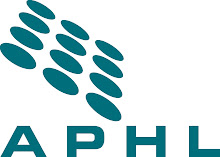By Scott Becker, Executive Director, Association of Public Health Laboratories
On Wednesday, May 5, a dedication ceremony was held for the new State Hygienic Laboratory at the University of Iowa. The three-story, 113,900-square-foot facility, which replaces one constructed in 1917, houses the states’ environmental and public health laboratory.
The opening of the state-of-the-art facility marks the culmination of years of work by the lab’s staff who identified the need for a new building, worked tirelessly to secure the funding, and directed design and construction of the enormously complex edifice.
The Hygienic Laboratory is responsible for conducting tests to detect diseases and contaminants in the environment. It also monitors for the presence of diseases and for contaminants in Iowa's waterways and air. In emergencies, such as the Iowa floods of 2009, it serves as the state’s laboratory first responder.
The facility will allow for new collaborations, including those to study interactions between human health and the environment, and to evaluate emerging laboratory technologies that could save lives and money. Who knows? Scientists here could uncover indicators linking infectious and chronic disease or develop methodologies that will revolutionize laboratory diagnostics.
The people of Iowa are the immediate beneficiaries of this state-of-the-art health resource. Yet, because no public health laboratory works in isolation, this new facility actually benefits those of us in the rest of the country as well. Its presence represents another step toward our shared mission--shaping a healthier future for all.
Friday, May 7, 2010
Thursday, May 6, 2010
Suspicious Powder Sample Sent to Arizona State Lab for Testing
The Laboratory Response Network (LRN) and its partners maintain an integrated network of laboratories that are fully equipped to respond quickly to acts of chemical or biological terrorism, emerging infectious diseases, natural disasters and other public health threats and emergencies. The LRN became operational in 1999 and has since performed essential public health services, notably including responding to the Anthrax attacks of 2001.
Most recently in Phoenix on Tuesday, the State Department of Health (Arizona Bureau of State Laboratory Services, an LRN member laboratory) similarly acted to test a white powder letter addressed to Governor Jan Brewer. The letter was opened by a staff person in the State Capitol sending the hazmat team scrambling to lockdown the building.
In situations such as this, the FBI will deliver the suspicious sample to the LRN laboratory. The LRN lab’s highly trained staff will then run a panel of tests (standardized across the LRN, specific to BioTerrorism and Public Health threats) in a very secure and safe environment to determine if there exists an agent of interest within the suspicious sample. The testing methodology is robust and redundant, with verification and confirmation tests run for any positive samples. All data specific to threat samples received and tested by the LRN labs are then reported to CDC as well as to the FBI.
Currently the FBI is awaiting results on the samples in Arizona.
Subscribe to:
Comments (Atom)




